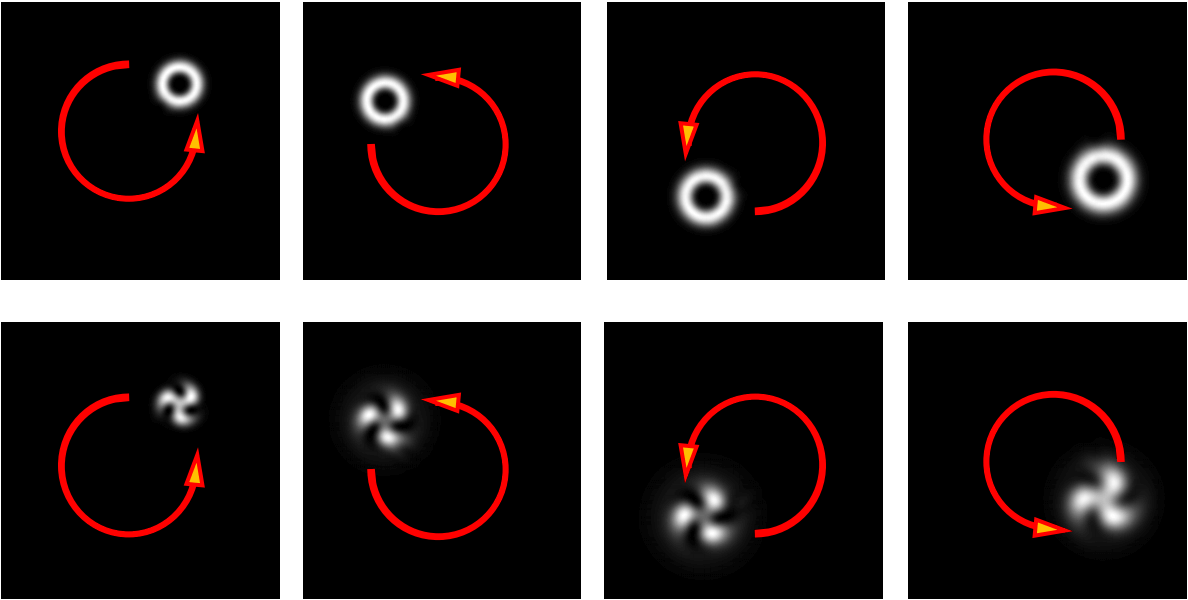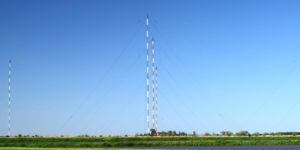
This series of images from the team’s paper in Nature Communications shows a rotating-revolving beam in near-field. (PHOTO CREDIT: Zhe Zhao)
It is not every day that scientists are able to produce an entirely new kind of light, but when they do the implications can be dramatic. When twisted light beams carrying orbital angular momentum were uncovered in 1992, researchers realized the potential to increase data transmission speeds over current approaches. Separately, in 2005, the Nobel prize in physics was awarded for the invention of the optical frequency comb – a device that creates a spectrum of equally spaced frequencies of non-twisted light. Such combs have become fundamental tools for metrology and atomic clocks.
Now, thanks to research from Alan Willner, professor of electrical and computer engineering at USC Viterbi and his recently graduated PhD student Zhe Zhao, we can add a new structure to this list. In a paper published in Nature Communications, the pair showed how combining twisted light and frequency combs together can produce an even more novel structure of light.
“Through this technique light can be tailored in more detailed and exquisite ways than ever before.” – Zhe Zhao
For some time, Willner’s lab, the Optical Communications Lab in the Ming Hsieh Department of Electrical Engineering, had separately researched twisted light beams and frequency combs. These two research paths were relatively separate in his lab until Zhao had a realization: What if we combined different optical frequencies and different twisted light? Combining these together resulted in something completely new.
At a given distance, the light can dynamically rotate around its center and revolve around another central axis. “It’s analogous to the Earth rotating on its axis and at the same time revolving around the Sun, simultaneously experiencing two forms of dynamic motion. This new structure of light carries two forms of orbital angular momentum,” Willner said. “Using different light frequencies and different twisted-light modes, combined together, can produce new dynamic structures of light.”
The team’s research sheds insight on our basic understanding of light generation and propagation. This innovation may have future applications in fields such as sensing, imaging, manufacturing, and metrology – anywhere that you may want light to have novel dynamic motion.
“Simply put, through this technique light can be tailored in more detailed and exquisite ways than ever before,” said Zhao. Advances in how light can be dynamically structured may lead to major breakthroughs across a variety of areas. Its creation opens the door to a new set of tools.
For now, Willner, Zhao, and the rest of the research group are focused on what other unique designed light they can build from this new tool.
Published on August 25th, 2020
Last updated on August 25th, 2020











